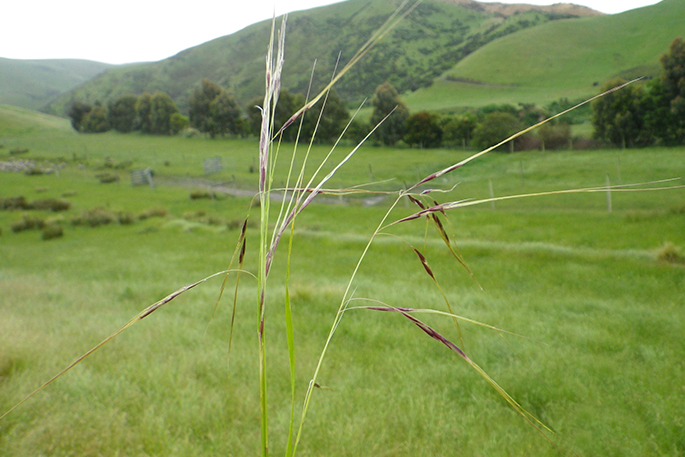The “sleeper weed” Chilean needle grass, if nothing was done to stop it, could spread through most of New Zealand and eventually cost the country over a billion dollars, according to newly published research.
Chilean needle grass (Nassella neesiana) is known to have already taken hold in Hawke’s Bay, Canterbury, and Marlborough. Its sharp penetrating seeds cause blindness in livestock, pelt and carcass damage, and the loss in pasture quality and grazing access leads to farm production taking a financial hit.
It is one of about 22,000 species of introduced plants in New Zealand. The scientific challenge is to identify those that pose an economic or environmental threat before they become widespread. These sleeper weeds can then be prioritised by authorities such as regional councils and the Department of Conservation for management to prevent their spread.
Under realistic low and high estimates of this weed’s spread rate, where it takes either 201 or 100 years to reach 90 per cent occupation of its potential climatically suitable range covering 3.96 million hectares, the loss to the pastoral sector is $192 million and $1.16 billion respectively. These losses would justify annual expenditures to prevent the spread of $5.3m and $34m respectively.
“This bio-economic modelling reveals that a nationally coordinated approach to managing Chilean needle grass makes best economic sense. This would include surveillance in susceptible regions and control measures in the infested regions,” says AgResearch senior scientist Chris Buddenhagen.



0 Comments
Leave a Comment